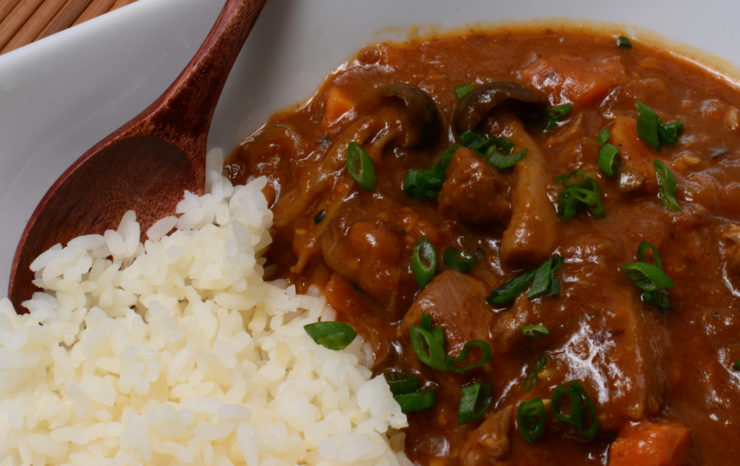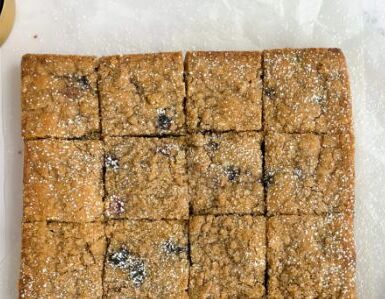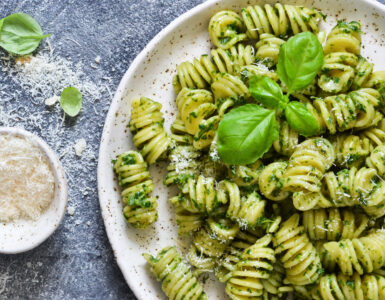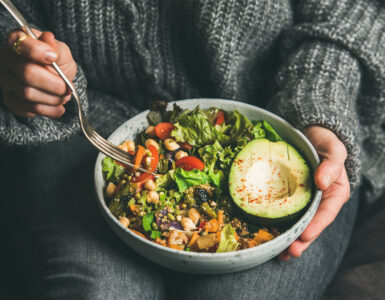This sweet and spicy recipe will take you halfway around the world.
Sue Neal shares how to make two variations of Japanese Curry.
Basic Japanese Curry With Beef
1 lb stewing beef
2 Tbsp vegetable oil
1 large onion, peeled and sliced or chopped
2 cloves garlic, finely chopped
1 honey crisp apple, grated
2 large carrots, peeled and cut into chunks. (see Rangiri note below)
1 large yellow potato, peeled and cut into similar size chunks as beef.
1 tsp unsweetened Cocoa powder
1 bay leaf
2 Tbsp Soy Sauce
2 Tbsp Tomato Paste
4 cups water or 1 Quart Chicken stock
1/2 cup frozen peas
1/2 box of Japanese Curry Roux (med. hot)
*Togarashi to taste (start with just a tsp, let it cook for a few minutes and taste. It will get hotter that longer it sits, so beware! See below for Togarashi substitute.
Heat oil in heavy bottomed large pot. If beef is moist, pat with paper towels before adding to pot. Cook beef until browned. Remove beef and add onion to pot and cook for 10 minutes on med heat until onions are caramelized. Add garlic, stir in and cook for 1 minute. Add rest of ingredients except water, peas and curry roux blocks.
Add 4 cups water, but depending on the size of your vegetables, you may need to add more. Make sure everything in the pot is covered with water. Bring to a simmer and cook about 10 minutes until potatoes and carrots are tender. Add curry blocks to pot, gently stir them in. Let them heat up and melt into the broth. Gently stir to combine and bring temperature up to thicken curry.
Add frozen peas last so they are bright green.
My one issue with Japanese curry is that it isn’t very pleasing to the eye. So despite not being traditional, I top my curry with sliced green onions or chives. Japanese Pickles (Fukujinzuke) can be bright colored and add a nice sour crunch to this dish, especially if it’s spicy.
Serve with a sticky rice. Any rice will work, but I like how Sushi rice sticks to my curry.
Japanese curry is traditionally eaten with a spoon.
If curry thickens before eating, or after being in the fridge, add a little water to loosen curry.
Japanese Curry With Chicken, Mushroom, and Sweet Potato
1 lb boneless chicken thighs, cut into chunks
2 Tbsp vegetable oil
1 large onion, peeled and sliced or chopped
Pack of Japanese Mushrooms* (Maitake Mushrooms & Bunashimeji) or any mushroom
2 cloves garlic, finely chopped
1 honey crisp apple, grated
1 sweet potato, peeled and chopped into 3/4″ pieces
4 cups water or 1 Quart Chicken stock
1 bay leaf
1 tsp salt
2 Tbsp Soy Sauce
2 Tbsp Tomato Paste
1/2 box of Japanese Curry Roux (med. hot)
1/4 cup milk or cream
I created this to be a mellow curry and not spicy at all, but it is flavorful. You can easily add Togarashi to spice it up.
Heat oil in heavy bottomed large pot. If chicken is moist, pat with paper towels before adding to pot. Cook chicken until browned. Remove chicken and add onion to pot and cook for 10 minutes on med heat until onions are caramelized. Add garlic, stir in and cook for 1 minute. Add rest of ingredients except water, curry roux blocks and milk/cream.
Add 4 cups water, but depending on the size of your vegetables, you may need to add more. Make sure everything in the pot is covered with water. Bring to a simmer and cook about 10 minutes until potatoes are tender. Add curry blocks to pot, gently stir them in. Let them heat up and melt into the broth. Gently stir to combine and bring temperature up to thicken curry.
Finish with a splash of milk or cream. This is a common add-in in Japan (as is cheese!) and will mellow and round out the flavors.
My one issue with Japanese curry is that it isn’t very pleasing to the eye. So despite not being traditional, I top my curry with sliced green onions or chives. Japanese Pickles (Fukujinzuke) can be bright colored and add a nice sour crunch to this dish, especially if it’s spicy.
Serve with a sticky rice. Any rice will work, but I like how Sushi rice sticks to my curry.
Japanese curry is traditionally eaten with a spoon.
If curry thickens before eating, or after being in the fridge, add a little water to loosen curry.
Background:
The first place our friend, Jordan took us to eat in Kyoto, Japan was a Japanese Curry restaurant. He doesn’t know this, but I was disappointed. Curry? In Japan? And a franchise no less! I was SO looking forward to all the Japanese food I love; Okonomiyaki, Yakitori, Sushi, Ramen, Shabu Shabu etc… WHY were we here?
Of course, I humbly followed him in, because well, he had lived in Japan, had studied all things Japanese, was about to marry a Japanese girl, so clearly he knew something I didn’t about Japanese food. Duh.
You could customize whichever curry you choose (I picked Mushroom/chicken) from heat levels 1 through 10. I asked Jordan which number it started to get hot. He said three. So I ordered three. It was SO HOT, I could barely eat it, but I did, every last bite. It was simply so delicious, I walked through the valley of lip death and enjoyed every minute!
What a food revelation! Of course, I immediately started searching recipes and history on this curious Japanese dish with plans to eat more curry while on my trip and to make it once I was home.
Curry was most likely introduced to Japan via the Anglo-Indian officers of the British Royal Navy in the 1850’s, started being served in restaurants a few decades later and then, significantly, instant curry blocks were developed in the 1950s. It is so popular in Japan that is regarded, along with Ramen, as one of the top two national dishes, ahead of sushi and miso soup! I read that Japanese on average eat curry once a week!
So, what’s the difference between Japanese curry and Indian or Thai curry? Sweeter, thicker and normally less spicy, although obviously some Japanese like it hot!
It’s typically served with sushi rice (but any rice with do) and a side of Fukujinzuke, which are Japanese pickles. This adds a sour and crunchy aspect to the curry, but isn’t necessary to enjoy Japanese curry. Another popular restaurant version is to add a breaded, sliced pork cutlet to the dish; Katsu curry.
To wrap your head around Japanese curry,
think of it as a slightly sweet, slightly spicy,
very flavorable stew served over rice.
The best part of making this dish is just how simple it is. You can make it on your stove top or in an Instapot. If you are using stewing beef on the stove top, you’ll need a few hours to soften the meat, but if you use chicken thighs (my favorite), it can be done in a little over 30 minutes. You could even just make your favorite stew and then add the curry blocks to keep it really simple.
The mixture of spices is what makes this dish unique. You can make this part from scratch, however most Japanese use the pre-made curry blocks (which include spices and the thickening agent), which are simply added to the dish once it’s together. Let it melt and combine and you’ll have a silky smooth gravy with tender chunks of meat, potatoes and vegetables or whatever else you want to add.
You can purchase these Japanese curry blocks at any Asian store. I got mine in Japan (how cool is that?), but also at Ocean Mart. Each brand is slightly different, so you may want to try a few different kinds. I was pretty nervous about the heat level after my fiery experience at CoCo, but not to worry, even the hottest curry blocks were not hot in my opinion. So, at least start with a medium and go from there.
So, there you go, simple. But wait…there’s more, of course there is more!
IF you want to dig a little deeper into this dish, you’ll do as most Japanese and make it your unique version by adding a fascinating collection of ingredients. A little bit of this, a little bit of that…can make a huge difference. Here’s a list of what some might add to the dish. DO NOT add all of them (yikes!), but you may want to try a few of these to add more complex flavors to your curry. I would personally recommend the grated apple (add at the beginning so it pretty much disappears), a Tbsp of Tomato paste, Cocoa powder (just a tsp), soy sauce and Togarashi to spice things up a bit (go easy, this is spicy!).
Grated apples or other fruit (Banana, mango, etc…)
Jam
Honey or sugar
Soy Sauce
Worchestershire sauce
Ketchup
Tomato Paste
Chocolate
Cocoa Powder
Cheese
Coconut milk
Milk or cream
Yogurt
Coffee
Garlic
Wine
Tonkatsu sauce (amazon or Asian store)
Chunou sauce (fruit sauce/amazon or Asian store)
Togarashi is a pepper spice mix (amazon or Asian store)
Rangiri:
If you love honing your knife skills, you may want to try your hand at Rangiri, a style of cutting vegetables that gives you more surface area to absorb seasonings faster. Simply rotate vegetable 90 degrees between every diagonal cut. It’s particularly good to stewed dishes.
Togarashi:
(or Japanese seven spice) is quite unique and difficult to fully substitute, but in a pinch, Chili pepper, Cayenne and/or red pepper flakes will work.
Typically this blend includes ingredients like tangerine peel and dried nori (seaweed), sesame seed, poppy seeds, ginger, garlic and szechuan peppercorns.
Half of our family loves the HOT stuff, so I usually make a batch with a good amount of Togarashi in it.
Find more recipes from Sue at www.sueneal.blogspot.com.















Add comment